 This month’s Author-Illustrator Interview features Angela Quezada Padron, a Latina creator with a growing presence in children’s literature. Angela writes and illustrates picture books, board books, middle-grade novels, and more, often highlighting diverse characters and stories inspired by her own background and experiences.
This month’s Author-Illustrator Interview features Angela Quezada Padron, a Latina creator with a growing presence in children’s literature. Angela writes and illustrates picture books, board books, middle-grade novels, and more, often highlighting diverse characters and stories inspired by her own background and experiences.
Alongside her creative pursuits, Angela has also worked as a freelance editor, educator, and fine artist, recently bringing her talents to Bushel & Peck Books as one of my Editorial Assistants. While we’ve worked together in that capacity, I thought this interview would be a great opportunity to learn more about her journey as an author-illustrator and her creative process.
Let’s dive in and hear from Angela about her work, her inspirations, and what’s next!
RVC: You’ve been writing and illustrating since childhood. What was the first story or illustration you remember creating that made you think, “This is something I love to do”?
AP: Thank you so much for this opportunity to speak to you about my publishing career. I did a lot of writing and illustrating as a child. I used to create books with Snoopy as the main character. Sometimes I wrote about Santa or my mom when she was having a baby. I also took Creative Writing in middle school and loved the class. And I used to go to the public library and check out the Writer’s Market book to try and get greeting cards or stories published too. However, for some reason I didn’t think about writing as a career, probably because I was focused more on fine art and studying to be either a doctor or a teacher.
It wasn’t until I was in my early 30s when I got an original middle grade story idea in my head. I flushed out the character and the general plot and fell in love with writing again. That’s when I looked for an organization to help me and discovered SCBWI so I could learn about the business and craft of creating books.
RVC: We’ll circle back on SCBWI in a moment. Your journey began as an illustrator and educator before becoming an author-illustrator. How did your teaching experience inspire you to write your own stories, and how has it influenced your creative process?
AP: As a teacher, I was surrounded by children’s books all day. When I would read with my students or take them to the library to check out books, I started looking at the books differently than when I read books as a child. I had a more analytic lens while teaching the students literary skills. I studied the language patterns and characters that the authors incorporated. Also, even though I was a fine artist, I had not seriously illustrated stories, so I began to pay more attention to the layout, style, and color palettes of the illustrations. I became engulfed in the imagination sparked by the stories like my students did, as if I were a child all over again. That ignited my creativity and story ideas blossomed. Then of course being around children all day, I was exposed to some interesting and unique personalities and backgrounds, which gave me ideas for some characters and story lines.
I knew I needed more education myself, though, so I completed an online MFA in Illustration through the Academy of Art University in 2011. That gave me the skills, experience, and confidence I needed to start promoting myself as an illustrator, which led me to illustrate two trade books and some educational material between 2012–2014.
 RVC: Let’s talk about those books! As the Seas Rise is such a powerful author/illustrator debut. What’s the story of how that book came to be?
RVC: Let’s talk about those books! As the Seas Rise is such a powerful author/illustrator debut. What’s the story of how that book came to be?
AP: Thank you, I really enjoyed working on it. I had always loved nonfiction from the time I was a kid (shout out to my mom for getting us a home set of Encyclopedia Britannica!).
RVC: Encyclopedia Britannica? I swear, each volume weighed more than a sack of potatoes. Good times.
AP: I attended the Virtual SCBWI Nonfiction Conference in 2020 and heard some fabulous authors speak, like Carole Boston Weatherford and Lesa Cline-Ransome. I became fascinated with the more narrative way that nonfiction was being written, and I also learned that there was a lack of diverse biographies, especially Latina figures. I did some research and found articles about Nicole Hernandez Hammer, who is a climate change scientist and activist originally from Guatemala. I found her on LinkedIn and reached out for a possible interview. She replied, and we met in Zoom where I was able to verify some information I had read about her. That gave me a good basis to write the manuscript. Once I got the book deal, I asked Nicole to consult on the book and she did, on both the text and art, throughout the entire process.
RVC: Nonfiction books often require balancing storytelling with factual accuracy. What challenges did you face in managing both the writing and illustrating of As the Seas Rise?
AP: I was lucky to be able to consult with Nicole throughout the entire book process. Without that, I think it would have been a difficult book to write because there is not much written about her; I would have been scrambling for ideas for some of the spreads. The text itself wasn’t too hard to write because it all fell into place quickly; I wanted it to sound “picture-booky” and lyrical while also including the factual information in both the text and art. At the same time, this presented a challenge. Nicole had limited photo references from her childhood, and many of the photos were grainy or not sharp, as they often were in the 1970s. So, I had to try extra hard to make sure that I was illustrating her correctly and portraying her family members well so that it was as accurate as possible while also pleasing Nicole and my publisher.
RVC: You work across genres, from board books to middle grade novels. How does your process differ when creating nonfiction biographies compared to fictional stories?
AP: There is definitely a lot more time spent on researching nonfiction picture book topics and finding the right voice and tone of the text so it doesn’t sound like an encyclopedia entry. The illustrations are just as important so that any biographical figure is portrayed accurately and consistently, no matter if the illustration style is more realistic or stylized. I always try to get some insight from the person directly or their family if the figure has passed away; even though an author can write a book about a public figure, I prefer to reach out and get approval first if possible.
RVC: Are there any things that are the same with fiction and nonfiction?
AP: I like to include back matter. All three of my fictional books that will be released in 2026 have back matter; I felt it was important to give a little more insight and information to the reader besides just the story. This also helps with sales to schools, libraries, and homeschool families. However, I do try to make sure there are similar aspects in all my books regardless of genre so my style is threading through all of them.
RVC: Your work often shines a spotlight on Latino figures and their contributions. What draws you to these stories, and how do you decide which ones to bring to life?
AP: My father was from the Dominican Republic, and I always connected to his side of the family very strongly, despite growing up in New Jersey and not learning Spanish until I was older. I also began working with children of migrant workers during a summer program and eventually became a bilingual / English as a Second Language teacher to help students learn English. It was in these roles where I was exposed to many other Latino cultures. Having also taught Spanish in elementary schools, many of my non-Latino students were fascinated in learning Spanish and about Latino cultures, so I think these books are as much for them to learn about people and topics outside of their own culture as it is for Latino children to be seen and feel seen.
RVC: Let’s pivot to talk about art. Your illustration style is rich with texture and color. Can you share your favorite tools or techniques, and how your process has evolved over the years?
AP: I am a big fan of bold, colorful art and illustrations. One of my favorite children’s book illustrators is Eric Carle, so I also have painted acrylic on tissue paper to create collage pieces and also to scan and insert those painted papers digitally into illustrations. I used to try to draw more realistically but have been learning to loosen up and get more stylized. I tend to feel most comfortable having a pencil in my hand and getting my fingers dirty with pastels, watercolor, colored pencil and glue from collaging rather than a stylus to draw digitally.
In the past, I have drawn the illustration outlines with brown colored pencil, painted and colored the spreads by hand, scanned in everything, and then put it all together like a digital puzzle in Photoshop. However, since I’m working on two books at once right now, I will be coloring mostly everything in with a mix of Photoshop and Procreate to save time, including bringing in scanned textures to still maintain a hand-illustrated look.
RVC: It’s always fascinating to me the lengths people go to make digital art look like hand-created art. But you said it–it’s simply more efficient, right?
AP: It’s amazing to me what people are able to do with digital mediums these days, and I’m just getting started. The digital tools available to artists today definitely are helpful to save time, to keep colors and characters consistent, and to provide a wide range of brushes and textures to incorporate. However, in the end they are just tools; it’s really up to the creativity of the artist to make their art look good and unique, no matter if done by hand or digitally. I will say, though, that I think most publishers want final art in digital format whether that’s completely finished digital art or handmade art that is scanned in.
RVC: So, you’ve worked with literary organizations and educational publishers as a developmental editor and consultant. What does that collaborative process look like, and how do you ensure your work meets the needs of teachers and students?
AP: Most of my freelance work has been work-for-hire ESL, Spanish, or Literacy projects with specific specs to follow. I’ve sometimes been involved in the brainstorming and planning process of a program to make sure the skills and educational standards are being addressed in an effective scope-and-sequence. Other times, I’ve been a translator or the person to write or edit material. Other than working part time for an educational publisher in Miami where I would go into the office a few times a week, all of my freelance work has been done virtually via email. I’m usually working on updating previous editions of a textbook series, writing activity ideas for the teachers to implement in their classrooms, or starting on new projects that address the most current educational trends and state standards to ensure that the teachers have the necessary tools for maximizing standardized testing results.

AP: With the Cover to Cover books, students learn to decode and read high-frequency words throughout a story that only incorporates the phonics skills previously taught while also reading true sight words. In addition, the books address reading comprehension. The stories are geared toward a first-grade level; however, the characters and story lines are mature enough that any elementary student in K‑5 can learn to read from them.
We first developed a scope and sequence that scaffolds phonics skills and sight words decided by evidence-based research in the science of reading. Then I worked on the manuscripts (I’ve written about 90% of the stories so far). We made sure to have a diverse array characters and situations to keep readers’ interests high and make sure all students feel seen and are seen. We looked for authenticity readers in our organization to provide feedback. After editing, we worked with a hybrid publisher to secure illustrators. Then I switched hats from writing to art directing by reviewing character sketches, storyboards, final art, and layout. It’s been a great experience to not only learn how to write decodable texts but also to work on all aspects of the books from start to finish.
RVC: Wow, that’s a lot of hats. What’s so appealing about being an integral part in making these kinds of books (which are different from the types of books many kidlit writers dream of making when they first get into this field)?
AP: What I like best about these books is that they are full color, decodable books with really strong art and engaging texts. I believe they’re different than what’s on the decodable book market today. We wanted to make sure that kids at any age using the Reading Partners curriculum felt like they were reading books at the same quality as the ones they could find in a bookstore. At Reading Partners, we’re not only helping students to build their literary skills but also their love for reading.
RVC: I know you’re a fan of SCBWI—that’s how I first heard about you. What effect has this organization had on your career as a creative?
 AP: Yes! My first SCBWI conference was in Miami in 2004 where I heard Paula Danziger speak! I couldn’t believe I was in the same room with famous authors and illustrators. But that’s what’s so great about SCBWI. It’s an organization for the most well-known to pre-published book creators. We all belong and are made to feel like we fit in. Between attending conference workshops, paying for critiques, putting my portfolio out for viewing, mingling with other creators, and becoming part of my long-time critique group, SCBWI has changed my life completely. I was a semi-finalist in the Tomie dePaola illustration contest in 2014, and I won first place in the Florida SCBWI Rising Kite contest in 2014. I also won first place in the portfolio showcase at the 2023 Florida SCBWI conference.
AP: Yes! My first SCBWI conference was in Miami in 2004 where I heard Paula Danziger speak! I couldn’t believe I was in the same room with famous authors and illustrators. But that’s what’s so great about SCBWI. It’s an organization for the most well-known to pre-published book creators. We all belong and are made to feel like we fit in. Between attending conference workshops, paying for critiques, putting my portfolio out for viewing, mingling with other creators, and becoming part of my long-time critique group, SCBWI has changed my life completely. I was a semi-finalist in the Tomie dePaola illustration contest in 2014, and I won first place in the Florida SCBWI Rising Kite contest in 2014. I also won first place in the portfolio showcase at the 2023 Florida SCBWI conference.
RVC: Congrats on all of that success!
AP: Thanks! I signed with my agent after meeting her at a conference, and three out of my five books under contract are direct results of paid critiques from the conferences over the years. There are so many resources SCBWI offers and opportunities to learn and connect. I highly encourage anyone who wants to write literature for children to join SCBWI.
RVC: Say a few words about your experience with critique groups.
AP: I’ve been with my author critique group since 2004. We all met through SCBWI and started in person. When the pandemic hit in 2020, and some of us moved out of the area, we switched to just emailing each other our stories and meeting periodically in Zoom. Without their honest insight and feedback, there’s no way I would be published today. I emphasize the word “honest” because I need them to tell me what is really working and what really stinks. No sugar coating at this point!
RVC: Absolutely not!
AP: Also, for the last five years, I have also belonged to a critique group for illustrators, where I share my book dummies and character sketches. Their insight has also strengthened my submissions greatly because they’re looking at my work from not just a writer’s viewpoint but from an artist’s as well. The members of these groups are all more than my critique partners; they are truly my friends for life who have cheered me on and picked me up when I felt like giving up on getting published.
RVC: Let’s switch things up and focus on the audience. What key messages or feelings do you hope kids take away after reading your books?
AP: I want readers to make some kind of emotional connection to my books, whether they laugh at something I wrote or get that “aww” feeling. Even though many of my books’ characters and topics right now are from a Latino background, I think all readers, whether Latino or not, can find a way to relate to a character or situation to make a lasting connection with their own lives, experiences, and dreams. Most of all, I want them to just enjoy reading and revel in their imagination.
RVC: Working as an Editorial Assistant at Bushel & Peck Books gives you a front-row seat to the manuscript journey, from submissions we pass on to those we acquire and shepherd through production. What kinds of AHA moments have you had from seeing this process unfold, and how has it influenced your own creative work?
AP: First, I want to thank you for the opportunity to work with you as your assistant at Bushel & Peck Books. I’m learning so much each week, and I appreciate the chance to be able to learn more about publishing through this work.
RVC: Happy to have you aboard!
AP: I love to review manuscripts and provide insight that will hopefully make the texts even stronger. One big AHA moment was attending the staff meeting where I heard everyone provide their opinions and insights when deciding if a particular manuscript was going to be acquired. It was so interesting hearing different perspectives, and knowing what a publisher may be looking for when making that tough decision made me stop and rethink the strengths and weaknesses of some of my own story ideas. Could they be publish-worthy, or do they still need that special something that would make them stand out at an acquisitions meeting?
RVC: Last question for this part of the interview. What are some upcoming projects that you’re really excited about?
AP: I have four books releasing in 2026! Right now, I am working on the illustrations for two upcoming picture books, An Island Called Home (Eerdman’s, 2026) about a girl who visits her father’s island home for the first time (based on my life visiting my dad’s home in the Dominican Republic each summer), and Sisters All the Time (Charlesbridge, 2026) about two half-sisters who have to figure out how to have fun before their visitation time is up, based on me having younger and older half-siblings.
My two other upcoming books I wrote but am not illustrating: Lucia’s Goals (Lee & Low) started off as nonfiction but got changed to fiction. It’s about a girl who at first plays soccer on a boys’ team until she’s able to try out for a local girls’ team. And the fourth book is From the Fields to the Fight about Jessica Govea Thorbourne who worked with Cesar Chavez during the Delano Grape Boycott and helped fight for labor union rights.
RVC: Thanks for that, Angela. Now it’s time to shift gears and enter the SPEED ROUND. Zoomy questions followed by zippy answers please. Are you ready to begin?
AP: As my 16-year-old son would say, “Let’s goooo!”
RVC: Star Wars, Star Trek, or Stargate?
AP: Star Wars.
RVC: What makes your eyes roll every time you hear it?
AP: Brah (aka Bro).
RVC: What’s your go-to karaōke song?
AP: “Eye of the Tiger” – karaōke, singing in the car or in the shower: anywhere anytime!
RVC: If you could illustrate any classic picture book, which one would you choose?
 AP: The Story of Ferdinand by Munro Leaf.
AP: The Story of Ferdinand by Munro Leaf.
RVC: What’s one word that best describes your creative process?
AP: Winding.
RVC: What’s the best compliment you’ve ever received from a young reader?
AP: “That’s cool!” If a child thinks you as an adult are cool, you’re winning.
RVC: Thanks so much, Angela!



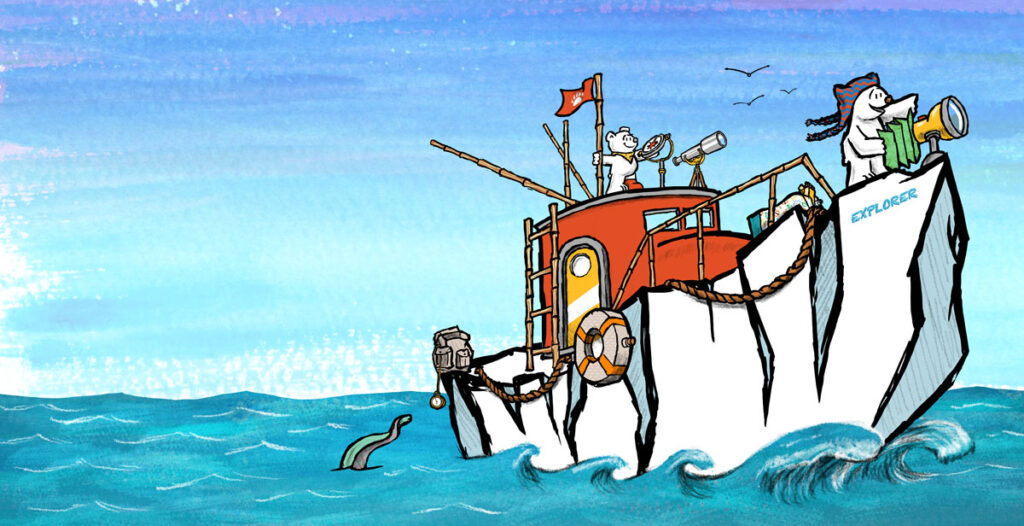
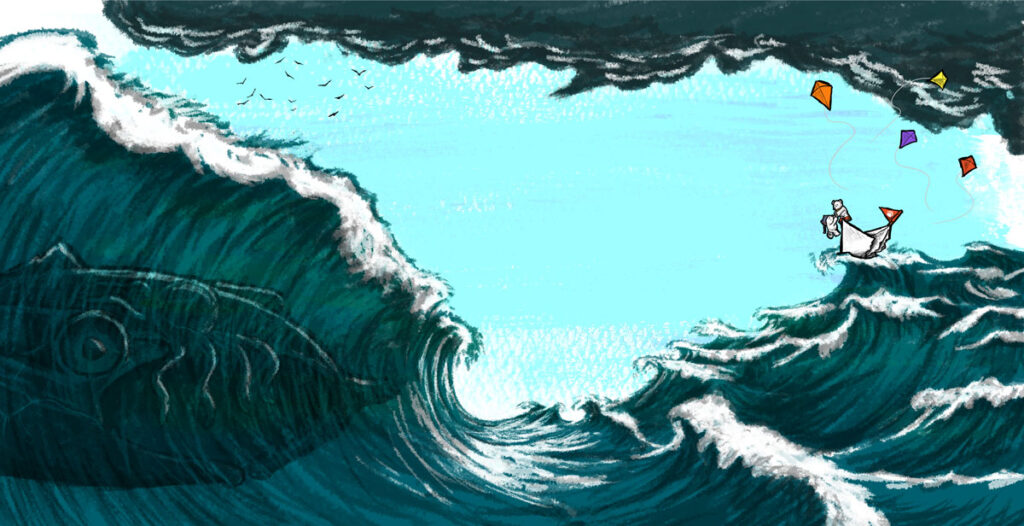



 This month’s Author/Illustrator interview is with queer, nonbinary storyteller Anne Appert “who uses whimsy and humor to inspire and connect with readers on their own journeys towards becoming their most authentic selves.” In all of Anne’s social media, I find variations of the following: “nonbinary artist, author, aunt, alliterator.” Such splendid use of similar sounds, wouldn’t you say?
This month’s Author/Illustrator interview is with queer, nonbinary storyteller Anne Appert “who uses whimsy and humor to inspire and connect with readers on their own journeys towards becoming their most authentic selves.” In all of Anne’s social media, I find variations of the following: “nonbinary artist, author, aunt, alliterator.” Such splendid use of similar sounds, wouldn’t you say?

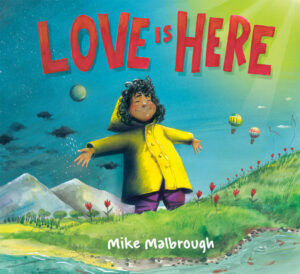
 Procreate which unlocked my illustrative voice. An agent at these events gave me invaluable advice on my portfolio and dummies through paid critique opportunities over several years, then introduced me to my first agent.
Procreate which unlocked my illustrative voice. An agent at these events gave me invaluable advice on my portfolio and dummies through paid critique opportunities over several years, then introduced me to my first agent.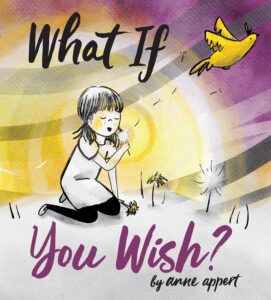



 This month’s interview is with Author/Illustrator Tadgh Bentley, a British illustrator and writer who now lives in Ohio with his wife, son, and dog. He’s a fan of penguins (witness his Little Penguin series), so we know he’s a truly terrific person. He’s also keen on creating books about critters of all types, as evident from such picture book titles as
This month’s interview is with Author/Illustrator Tadgh Bentley, a British illustrator and writer who now lives in Ohio with his wife, son, and dog. He’s a fan of penguins (witness his Little Penguin series), so we know he’s a truly terrific person. He’s also keen on creating books about critters of all types, as evident from such picture book titles as 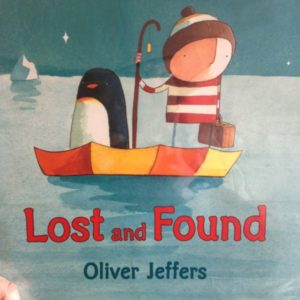




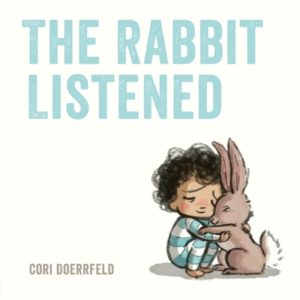





 This month’s Author/Illustrator Interview is with Bonnie Kelso. I already know her because she’s coauthored picture book reviews right here at
This month’s Author/Illustrator Interview is with Bonnie Kelso. I already know her because she’s coauthored picture book reviews right here at 




